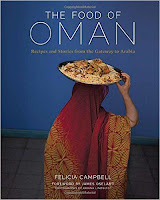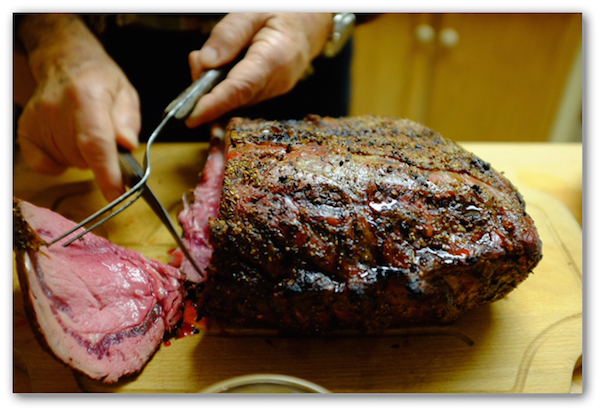Vegan croissants are nothing new since the invention of butter substitutes that act and bake very much like their dairy counterpart. The problem is that the croissant-making process is pretty laborious and takes a certain amount of skill to pull off so you don't end up with margarine squirting out from between your layers of dough and making a huge mess. I speak from experience. But what if you could make croissants with minimal skill and only about 45 mins of prep time? Wouldn't that mean that all of us could frolic in fields of flaky pastry and French-inspired carbohydrate goodness? Yes! Yes, it would! Well, the dream is a reality: these croissants are both easy and tasty. Sure, they are not exactly like a real croissant, but I am willing to trade time and ease for some flakiness and lightness. The worst thing that can happen is that you end up with the tastiest bun you've ever eaten.
Now, this recipe still takes time, but it is lazy, waiting around time. Actually prep time is comparatively minimal.
There are four things that make this recipe work. First, instant yeast. Only instant yeast can dissolve and raise the dough under these conditions. Second, you need to keep things cold. Warming things up before the final rise will mean greasy croissants with less rise. Third, keep things well-floured. Finally, keep in mind that you are not making a pie. Don't be afraid of bigger chunks of fat.
You can use all-purpose or bread flour. The former will give you a softer dough that is easy to work with, the second will give you a better gluten structure and more rise. I like a half and half mix of the two. You can also play around with the fat you want to use. The pictures here used a mix of shortening and coconut oil--it was less successful (you can see the chunks of coconut oil in the dough that never really flattened out) but still perfectly passable and edible. You want cold but pliable chunks of fat that will roll out without ripping your dough and tearing the layers. If you are using a rather soft fat, like Crisco or the like, I recommend keeping it in the freezer. The great thing is that unlike the traditional method, these croissants can be made with softer fats with pretty good results.
Recipe adapted from Reinhart,
Artisan Breads EverydayINGREDIENTS
Makes 7 croissants- 2 1/3 (298g) all purpose or bread flour, or a mix of the two
- 3/4 tsp salt (less if you are using a salted margarine like Earth Balance)
- 2 tbsp sugar
- 1 1/2 tsp instant yeast (NOT rapid or quick-rise)
- 3/4 cup (170g) cold margarine or shortening (or a mix of the two)
- 1/4 cup + 3 tbsp (99g/3.5oz) cold plain soy milk
- 1/2 cup (114g/4oz) cold water
METHOD
1. Whisk together flour, salt, sugar, and yeast.
2. Cut margarine/shortening into chunks and put in flour. Using a pasty cutter, gently incorporate the fat into the flour. You want to leave chunks of fat the size of large peas.
3. Drizzle the soy milk and water over the flour/fat mixture and gently incorporate with a silicon spatula. The dough will be sticky. When all of the liquid has been evenly incorporated, cover the bowl and place in the fridge overnight, and for up to three days.
4. On baking day, remove the dough from the fridge. It will have risen some in the cold, and will be sticky and spongy. Like so:
From here you will need about 3-4 hours to finish the bake. On a well-floured surface, and after flouring the top of the dough, pat the dough into a rectangle.
5. With a rolling pin, roll the dough into a rectangle approximately 7x15. The key to evenly rolled dough is to start in the centre and roll out towards each of the four corners. Square off the corners as best you can.
6. Now the laminating: fold the top edge down to the middle, and the bottom edge up to the middle.
Then, fold in half along the middle line.
Side profile:
7. Rotate 90 degrees so that the folded edge is on your left. Keeping everything adequately floured, Roll dough out into another 7x15 rectangle and repeat step 6. Rotate 90 degrees and repeat step 6 again. By now, the dough will have firmed up. If the dough bounces back too much, let it rest a few minutes before continuing to roll it out.
8. Cover the dough and let rest at room temperature for 30 mins.
9. Keeping everything adequately floured, gently roll the dough into a 9x16 rectangle.
10. Working along the long side, notch the dough every 4 inches. Do the same on the opposing side, starting two inches in from the edge.
11. Cut the dough into triangles by connecting the notches. I find a pizza cutter works really well for this. There will be some scrap pieces on either side.
12. This part takes a little finesse. Gently stretch the base of the triangle, then gently pull the tip of the triangle to extend the croissant's length. If the underside it too floury, dust off as much as you can.
Start rolling from the base to the tip. Anchor the tip to the counter with your finger so you can gently pull back on the base as you roll the croissant. Make sure the tip is on the bottom and place on a baking sheet lined with parchment paper. Tuck in the ends to get the crescent shape. You can make mini croissants with the end scraps.
13. Loosely cover the croissants with plastic wrap and let rise at room temperature for about 2.5 hours, until well-swelled.
14. Heat oven to 350 degrees, Bake for 15 minutes, then rotate the pan and bake for anther 15 mins until croissants are evenly golden.
15. Let cool for 1 hour, and enjoy! These croissants freeze very well.





















Comments: 0
Post a Comment